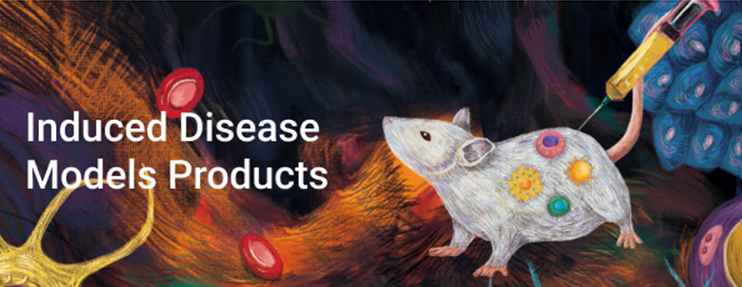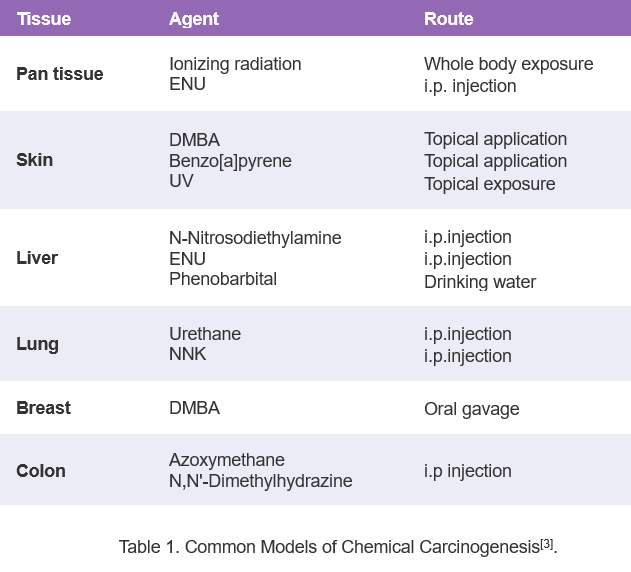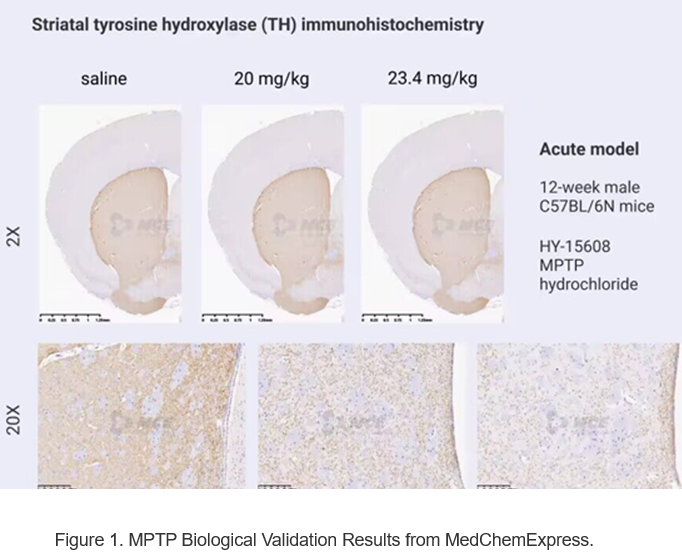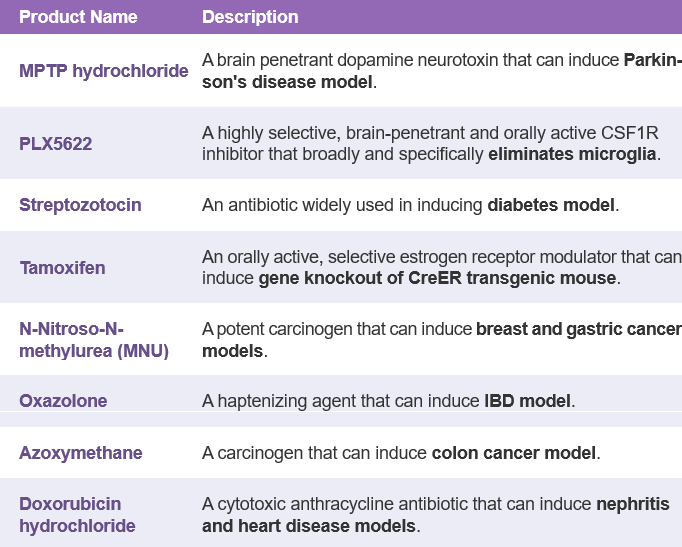

Animal models that accurately mimic diseases can be generated through genetic engineering, spontaneous generation, and chemical induction.
Ideally, a valuable animal model of any disease should have pathology similar to that of human disease.
Compared with genetic engineering and spontaneous models, chemically induced animal disease models are easier to manage and more cost-effective.
At present, many chemical-induced disease models have been widely used in the research of tumor, neurological, endocrine, immune, and other system diseases.
These models play important roles in the preclinical research for the development of new drugs.
Cancer Models
Chemical mutagens have the potential to trigger DNA mutations that induce tumor development, and different carcinogens tend to cause mutations at specific locations in the genome.
AD is characterized by the deposition of amyloid plaques and neurofibrillary tangles (NFT) in the of cerebral cortex and hippocampus regions of the brain,
while PD is caused by the degeneration of dopamine (DA) neurons in the substantia nigra pars compacta (SNpc).
Intraventricular administration of Streptozotocin (ICV-STZ), Colchicine, and different fragments of amyloid have been widely used to induce AD models.
In humans and non-human primates, MPTP can replicate the motor impairments of PD, including tremors, rigidity, slowness of movement, postural instability, etc.
Immunology and Inflammatory Disease Models
Inflammation constitutes an important part of the body’s immune responses and has five main characteristics: pain, heat, redness, swelling, and loss of function.
Chemical agents, pathogens, and trauma can all recruit inflammatory cells and cytokines, thereby inducing inflammation.
or Oxazolone results in T cell-mediated immune responses against haptenized proteins and luminal antigens.
MedChemExpress Products
immune and inflammation, nervous system, cardiovascular system, respiratory system, digestive system, urinary system, etc., to meet your diverse research needs.
DBA-ITALIA Srl
Via Umbria 10
20054 Segrate (Milano)
Tel. +39 02-26922300
If you no longer wish to receive these announcements
click here 


